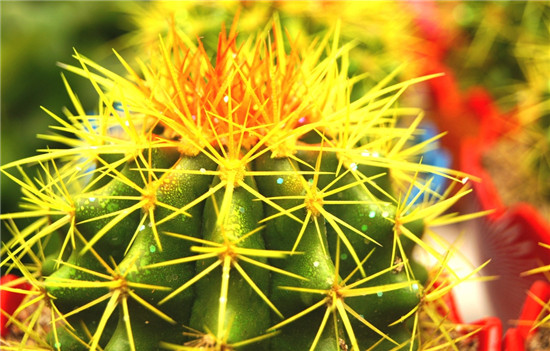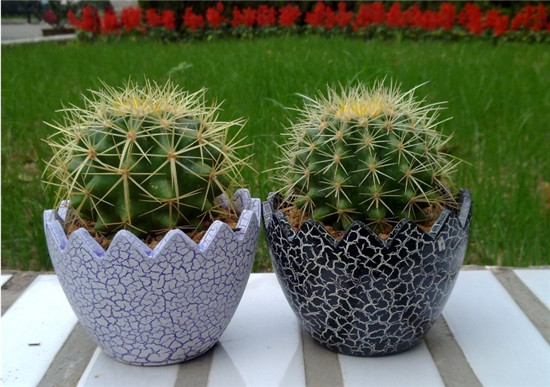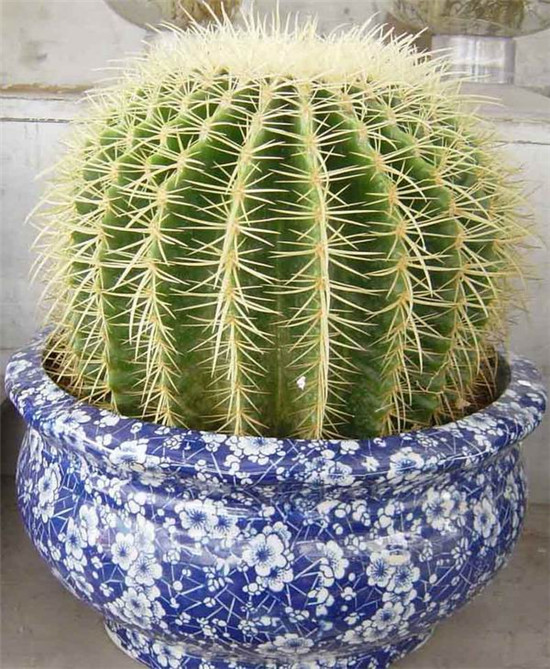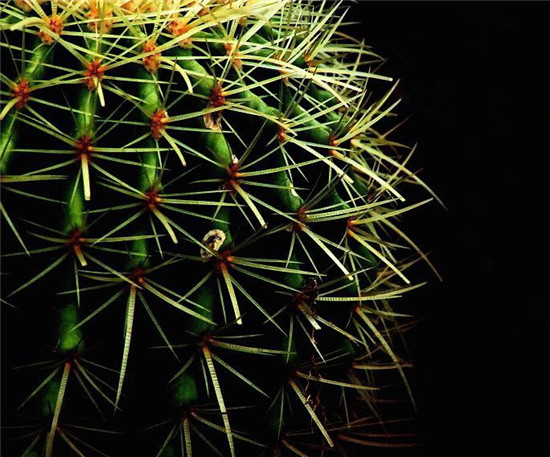[maintenance of gold] what are the maintenance methods of gold?
Golden mackerel is a perennial succulent plant of the family Cactaceae. It takes a 30-year-old mother ball to blossom from June to October. Next, let's take a look at the maintenance methods of the cactus.

Lighting: the cultivation of juniper should try its best to meet its demand for sunlight. Except for indoor maintenance in winter, it should be placed in a sunny place all day in spring, summer and autumn. If it is kept indoors for a long time, it will affect its body color and long thorns, sphere deformity and metamorphosis, resulting in the loss of ornamental value. When entering the house in winter, you should put it in the sunny place on the windowsill and turn the basin for a period of time to make the sphere receive light evenly. When the hot sun shines directly in the middle of summer, it should be properly shaded. The author's approach is to cover the upper part of the golden vault with colored plastic bags to protect the furry dome from the rain, and then use large plastic bags with balls and basins to cover them and put them in the place where the outdoor sun has been exposed for the longest time. When the heat is high in summer, remove the large plastic bag to avoid the ball rot caused by dampness in the bag. After removing the bag, the basin ball is in a ventilated environment, and the sphere grows well.

Watering: although Jinzhu is resistant to drought, it is not without water. Some golden oysters have never been raised or even shrunk, which is related to not watering them for a long time. Golden mackerel should be given sufficient water in spring and autumn, and water moderately in winter and summer dormancy. Watering 4, 5 days or once a week in the early growth stage should be watered from the edge of the basin, preferably at 9 or 10 o'clock in the morning or 4 or 5 o'clock in the afternoon. Tap water had better be kept for 2 days before watering. From late April to June, the water demand of Jinfu increased, watering once in the morning and once in the evening, and should be watered thoroughly. During the plum rain in June, beware of the pot soil getting too wet, resulting in rotting roots. In July and August, Jinzhu goes into summer dormancy, so it is necessary to control watering. From late September to October, Jinzhu entered the growing period again, watering once every 3 or 4 days. The growth of juniper tends to stagnate in November, and it can be watered once every 10 days. In December, the golden mackerel went into dormancy without watering to enhance its cold resistance.
Fertilization: thin fertilizer should be applied frequently in spring, once a week. Once a day in May, June 4 and 5, the concentration can be slightly higher. Do not apply fertilizer when it is hot in summer. It can be applied once a week in September and October, and there is no fertilization from November to the following spring. Fertilizer should be diluted with water after poultry, fish residue or poultry manure is cooked, it should be carried out after 9-10:00 in the morning or after 5 o'clock in the afternoon, and then watered every other day after fertilization.

Culture soil: loose, moderate fertility, neutral or slightly acidic, rich in organic matter, bagged loam, 2 ① loam, 2 rotten leaf soil or peat soil, 1 sieve bone powder, 4 coarse sand; ②: 3 coarse sand, 3 garden soil, 2 rotten leaf soil, 1 lime, 1 broken brick or tile, with a little calcium superphosphate, charcoal particles or bone powder.
Pots and utensils: breathable mud basin is the best, followed by pottery basin, porcelain basin and so on. The size of the basin depends on the gold sphere, and the gap between the sphere and the basin wall is 3-4 square meters. The sphere is large, and the gap can be appropriately larger.
Planting: the best time is when the hibernation is over and the growth has not yet begun. The second is the summer dormancy period. Specific operation: cover the bottom hole of the basin with tiles or broken basin pieces, fill it with 1 beat 4-1 beat tiles, masonry, withered branches and other hydrophilic materials, and then fill it with 1 hand 4-1 hammer 3 culture soil. Cut off part of the root system, put the gold amber in the middle of the basin, bury the neck of the root with soil, gently shake the basin body, make full contact between the soil and the root, compact the soil around the root with your hands, and then cover it with a layer of coarse gravel to resist the erosion of watering. No need to water, leave it indoors until it grows and then water it.

Turn the basin: the time of turning the basin is the same as planting, once a year or every other year. First prepare a large basin and new culture soil, remove the ball from the old basin, remove part of the persistent soil, and cut off some withered roots, rotten roots, etc., dry and then put on the basin. The operation is the same as planting. In addition, because the sphere is too large, it is difficult to turn the basin, so part of the persistent soil can be removed and added to the new culture soil. After changing the soil, it is compacted and covered with a layer of coarse gravel without watering.
Anti-cold: Jinzhang is not cold-resistant. When the temperature drops to about 5 ℃, you can move it into the sunny place indoors to keep the potted soil dry and beware of cold wind.
The above is all the contents of the maintenance methods of Jinyi that I have summarized for you. I hope this article can help you. Please continue to follow us.
Related
- Wuhan Hospital Iron Tree Blooming Result Was Instantly Frightened by the Gardener Master
- Which variety of camellia is the most fragrant and best? Which one do you like best?
- What is the small blue coat, the breeding methods and matters needing attention of the succulent plant
- Dormancy time and maintenance management of succulent plants during dormancy
- Minas succulent how to raise, Minas succulent plant pictures
- What are the varieties of winter succulent plants
- How to raise succulent plants in twelve rolls? let's take a look at some experience of breeding twelve rolls.
- Attention should be paid to water control for succulent plants during dormant period (winter and summer)
- Watering experience of twelve rolls of succulent plants
- Techniques for fertilizing succulent plants. An article will let you know how to fertilize succulent plants.



